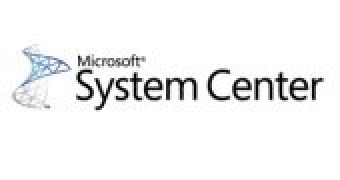Microsoft has released to manufacturing two solutions developed under the System Center umbrella, advancing its lineup of Windows data-protection offerings. Both System Center Essentials 2010 and System Center Data Protection Manager 2010 hit the RTM deadline on April 19th, 2010, with the Redmond company now gearing up for general availability. According to Jason Buffington, a senior product manager at Microsoft, the software giant has already started making the two solutions available for download.
Specifically, both System Center Essentials 2010 RTM and System Center Data Protection Manager 2010 RTM evaluation versions can already be accessed for those that want to test-drive the releases ahead of purchasing. Buffington indicated that customers would be able to purchase the solutions as well as kick off deployments in May 2010.
System Center Essentials 2010 is the successor of System Center Essentials 2007, and, at least in a sense, brings to the table the democratization of DRM. In this regard, midsized organizations can also take advantage of SCE, as the solution is not limited to enterprise customers. Buffington highlighted some of the new features in SCE 2010.
“Unified UI and workflows – the SCE development team really built a truly special UI that brings so many technologies together in one screen. There is sooo much power that all seem to be one hyperlink away. Virtualization Management – having virtualization truly integrated alongside software deployment and systems monitoring is awesome. SCE provides easy to use wizards for establishing a new virtualization host, deploying a new virtual machine, converting a physical server to a virtual one, or even migrating from a VM from VMWare to Hyper-V. Software Deployment – I did not use to be a ‘management guy’ … but software deployment and updates really are too easy with SCE. I cannot imagine managing computers any other way,” he stated.
System Center Data Protection Manager 2010 is the third generation of DPM, according to Buffington, and introduces new data-protection capabilities. Windows Client protection, for example, allows customers to enjoy a seamless experience in both offline and online scenarios. Additional new features include:
“Microsoft Application protection – there are some great enhancements for SQL Server (self-service restore, auto-protection of databases, scale), as well as good stuff for Exchange and SharePoint – especially enterprise scale such as a single DPM server protecting 2,000 SQL databases, 40TB Exchange datasets, 25TB SharePoint farms with 1M items. Virtualization protection – DPM truly lines up as THE way to back up Hyper-V, including LiveMigration/CSV support, item level recovery from VM backups, and alternate host restore,” Buffington added.

 14 DAY TRIAL //
14 DAY TRIAL //